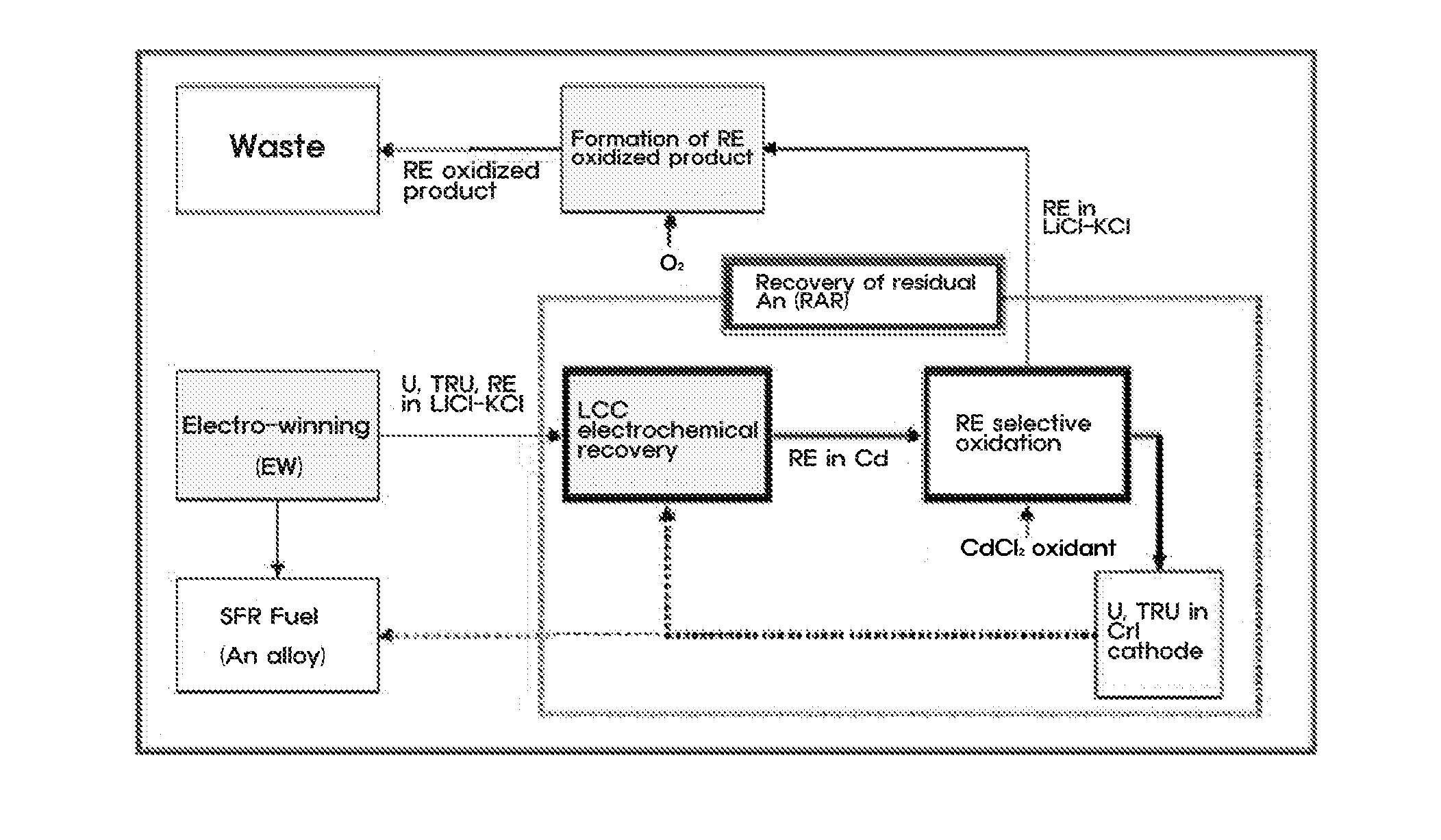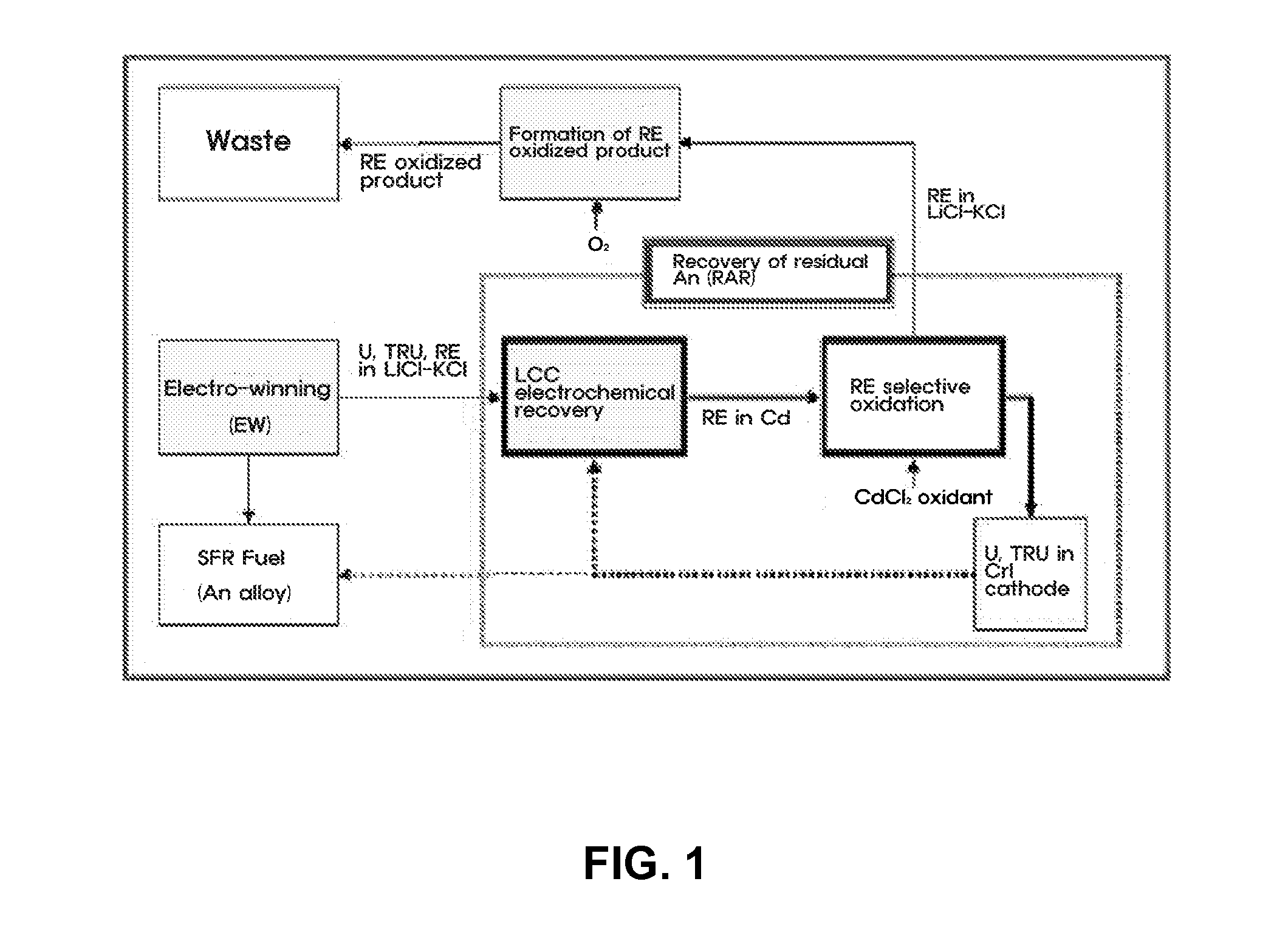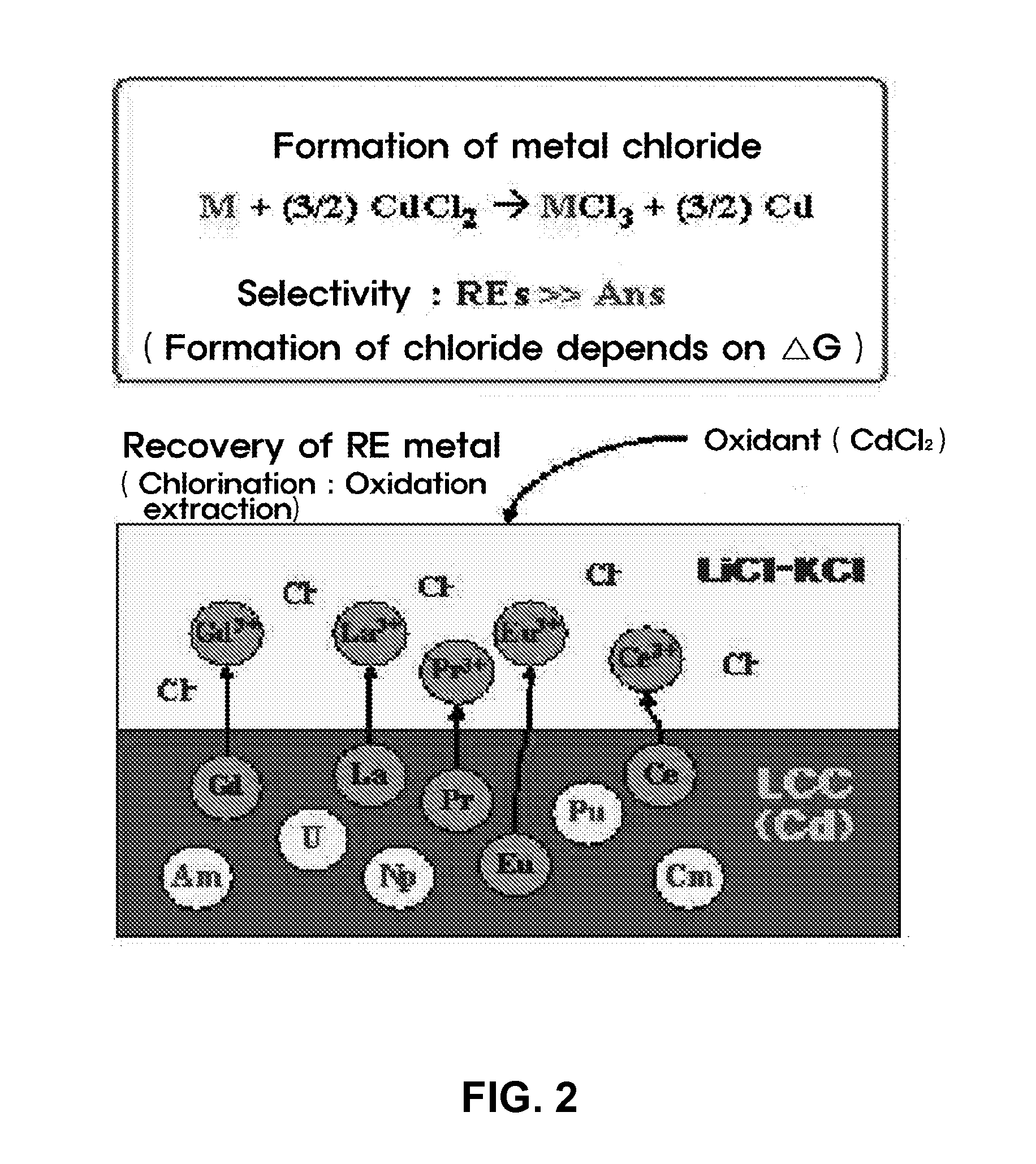Method for Recovery of Residual Actinide Elements from Chloride Molten Salt
a chloride molten salt and residual actinide element technology, applied in the field of chloride molten salt recovery of residual actinide elements, can solve the problems of deterioration in processing rate and efficiency, high difference between specific gravities of both molten salt and liquid metal, and complex operation of such apparatus, so as to improve the economic advantage of the pyroprocess, reduce the concentration of actinide elements, and improve the effect of pyroprocess efficiency
- Summary
- Abstract
- Description
- Claims
- Application Information
AI Technical Summary
Benefits of technology
Problems solved by technology
Method used
Image
Examples
example 1
Characteristics of LCC Electrochemical Recovery and Selective Oxidation of CdCl2 for Recovery of Residual Actinide Element
[0036]An experiment for recovering residual actinide elements in a waste molten salt was conducted by electro-depositing actinide elements in the molten salt on an LCC and electro-depositing the actinide elements at a current density of 10 to 100 mA / cm2 until a residual concentration of the actinide elements is decreased to 100 ppm or less, and then, measuring cyclic voltammetry CV (see FIG. 3). Afterward, most rare-earth metals excessively co-deposited on the LCC were oxidized and extracted by adding a CdCl2 oxidant to the molten salt.
[0037]For the selective oxidation of CdCl2 process, a change in amount of actinide elements and rare-earth metals in the molten salt was determined using CV by each interval of 30 minutes and a variation in status of the molten salt was observed in real time, so as to determine progress of the reaction (see FIG. 4).
[0038]The electr...
PUM
| Property | Measurement | Unit |
|---|---|---|
| current density | aaaaa | aaaaa |
| concentration | aaaaa | aaaaa |
| temperature | aaaaa | aaaaa |
Abstract
Description
Claims
Application Information
 Login to View More
Login to View More - R&D
- Intellectual Property
- Life Sciences
- Materials
- Tech Scout
- Unparalleled Data Quality
- Higher Quality Content
- 60% Fewer Hallucinations
Browse by: Latest US Patents, China's latest patents, Technical Efficacy Thesaurus, Application Domain, Technology Topic, Popular Technical Reports.
© 2025 PatSnap. All rights reserved.Legal|Privacy policy|Modern Slavery Act Transparency Statement|Sitemap|About US| Contact US: help@patsnap.com



